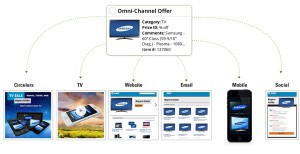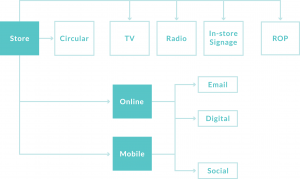Now that you know how to set-up an initial framework, you can begin to integrate marketing strategy into your calendar. Typically, most strategy is developed in a top-down manner with the following areas:
- Sales Events / Promotions & Holidays
- Marketing Campaigns
- Marketing Vehicles
Let’s dive into each of these a little further so we can begin to understand their place in your overall framework.
Sales Events / Promotions, Holidays & Conferences
No matter the industry, every organization has certain dates that exert an influence on their sales. The scheduling of events like promotions and holidays greatly affects your marketing performance. By highlighting important dates in the calendar, you can increase alignment between your sales and marketing strategy. This would also help with providing executing your tactical marketing activities with these markers in mind.

Marketing campaigns deliver your messages and strategy to customers across a variety of channels, ranging from Facebook to direct mail. Campaigns usually support a planned sales or promotional event by using the right combination of channels to reach your target audience. In the calendar, you can customize your channel preferences according to current campaigns. You might opt to emphasize digital for Back to School sales while prioritizing print materials for the upcoming Father’s Day promotion. That being said, campaigns don’t necessarily have to support events, as your organization might have other strategic initiatives they’re trying establish.

These are the tactical components of your campaigns that exist for a defined period of time and are specific to a marketing channel. Marketing vehicles can support either a single campaign or a combination. An example of a marketing vehicle might the banner on a homepage, or a television ad. In an ideal world, your marketing team would store all the details related to the vehicle in a single place to streamline execution.
It is important to understand your marketing strategy is designed to drive sales either through promotional advertising or development of your brand equity and each and every campaign and vehicle is designed to take you closer to your sales goals. With this constant mindset, you will ensure your campaigns & vehicles are initiatives defined on your marketing calendar that support your sales plan.
With these three components defining your marketing calendar, the next logical step is to layer in metrics such as planned and actual sales ensure your marketing campaigns and vehicles are aligned to generate the necessary traffic to drive sales. Additionally, KPIs (Key Performance Indicators) can also be layered on to track performance of your marketing strategy and help measure the ROI. Join us for our next blog post to learn how to do this.
To learn more about building a marketing calendar, checkout our free eBook!

